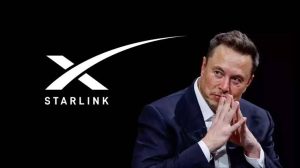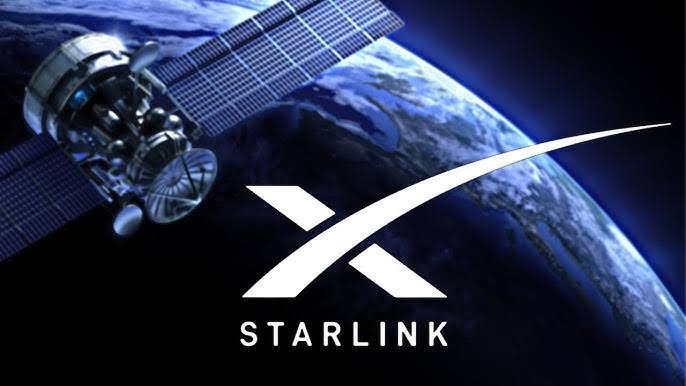By Anthony Emeka Nwosu
Elon Musk’s penchant for pioneering disruptive technologies is once again making waves, this time in the telecommunications sector. Through Starlink, the satellite internet arm of SpaceX, Musk is spearheading a revolutionary shift with Direct-to-Cell (DTC) technology, which will provide satellite internet connectivity directly to mobile phones. This innovation is expected to eliminate connectivity dead zones and redefine global communication infrastructure.
Announcing the milestone on his social media platform, Musk shared, “Starlink’s Direct-to-Cell (DTC) goes global. Major telcos are teaming up with Starlink to revolutionize connectivity!” He also revealed an impressive list of global telecom partners already onboard, including T-Mobile (U.S.), Rogers (Canada), One NZ (New Zealand), KDDI (Japan), Optus (Australia), and Salt (Switzerland). The announcement promises a future of seamless global coverage, enabling connectivity in areas previously unreachable by traditional cellular networks.
A Leap Toward Seamless Connectivity
Starlink’s Direct-to-Cell technology leverages SpaceX’s advanced satellite network to integrate directly with standard mobile devices. Unlike conventional satellite internet, which often requires specialized equipment, this technology works with regular 4G LTE phones, democratizing access to internet connectivity.
The potential implications are enormous, particularly for rural and underserved areas where traditional telecom infrastructure struggles to reach. By bypassing the need for extensive ground infrastructure, Starlink aims to fill critical gaps in global connectivity, offering unprecedented coverage even in the remotest corners of the world.
Overcoming Challenges and Regulatory Pushback
While the technological leap is groundbreaking, it has not come without challenges. Established telecom giants such as AT&T and Verizon initially opposed Starlink’s plans, arguing that the technology could interfere with existing networks. To address these concerns, SpaceX conducted 123 simulations to demonstrate to the Federal Communications Commission (FCC) that these objections were unfounded, ultimately securing the necessary regulatory clearances.
This triumph underscores Starlink’s commitment to innovation and its ability to navigate regulatory hurdles to deliver on its ambitious vision.
Diverse Reactions to the Announcement
The announcement has elicited a wide range of reactions from industry experts, customers, and critics.
Josh Peterson, a tech analyst, highlighted the significance of Starlink’s perseverance in overcoming opposition from entrenched players. “SpaceX’s ability to counter regulatory roadblocks is a testament to their focus on innovation and global connectivity,” he said.
Others framed the development as a triumph for individual freedom and sovereignty. Sagezza Eterna remarked, “This isn’t just about better internet; it’s about freedom from the telecom giants and state surveillance. Starlink’s Direct-to-Cell is a step toward empowering individuals with connectivity beyond government overreach.”
Some, like Michael Turk, argued for even greater independence from traditional telecom providers. “I personally don’t care if cell providers are onboard; I want them bypassed entirely. Starlink should aim for a standalone service and eliminate the need for cell towers altogether,” he said.
Simon Duque echoed concerns about telecom companies’ business practices, saying, “The issue isn’t just coverage. It’s their exploitative customer service and pricing models. I hope Starlink avoids partnerships that compromise its mission.”
A Lifeline for Rural and Remote Areas
For rural communities and remote workers, Starlink’s Direct-to-Cell technology offers a lifeline. Many residents in underserved areas are already reliant on Starlink’s services and are optimistic about the upgrade.
Terry Jeniscj, a user from rural Montana, shared her perspective: “The only service that works here is Starlink. We’ve been using it since 2021, and it’s been a game-changer. Direct-to-cell could take this to the next level, allowing us to stay connected even on the go.”
Similarly, Amity, who resides far from urban centers, noted the practicality of the technology. “This is fantastic for those living far from telecom towers. It only requires an LTE phone, and some providers like Optus are already offering it to business customers. I can’t wait to see it rolled out more widely,” she said.
Paulo, a tech enthusiast, likened the development to the early days of the internet, saying, “This feels like another seismic shift in how humans stay connected. It could revolutionize remote work, emergency services, and more.”

The global adoption of Direct-to-Cell technology has the potential to disrupt traditional telecom models, which rely heavily on ground-based infrastructure. By leveraging satellites, Starlink reduces dependence on cell towers, enabling faster deployment and broader coverage.
However, this innovation also raises questions about the future role of telecom providers. Will they adapt to the new paradigm and collaborate with satellite providers, or will they resist the change in a bid to maintain their market dominance?
A Vision for the Future
Starlink’s Direct-to-Cell technology is not just about connectivity; it represents a vision for a more inclusive and resilient global communication network. By bridging the digital divide and challenging the status quo, Musk and his team are shaping a future where connectivity is no longer a privilege but a fundamental right.
As the world watches this transformative technology unfold, one thing is clear: the future of telecommunications is no longer tethered to the ground. Starlink’s satellites are set to take connectivity to new heights, reshaping how people communicate, work, and live in the 21st century.




